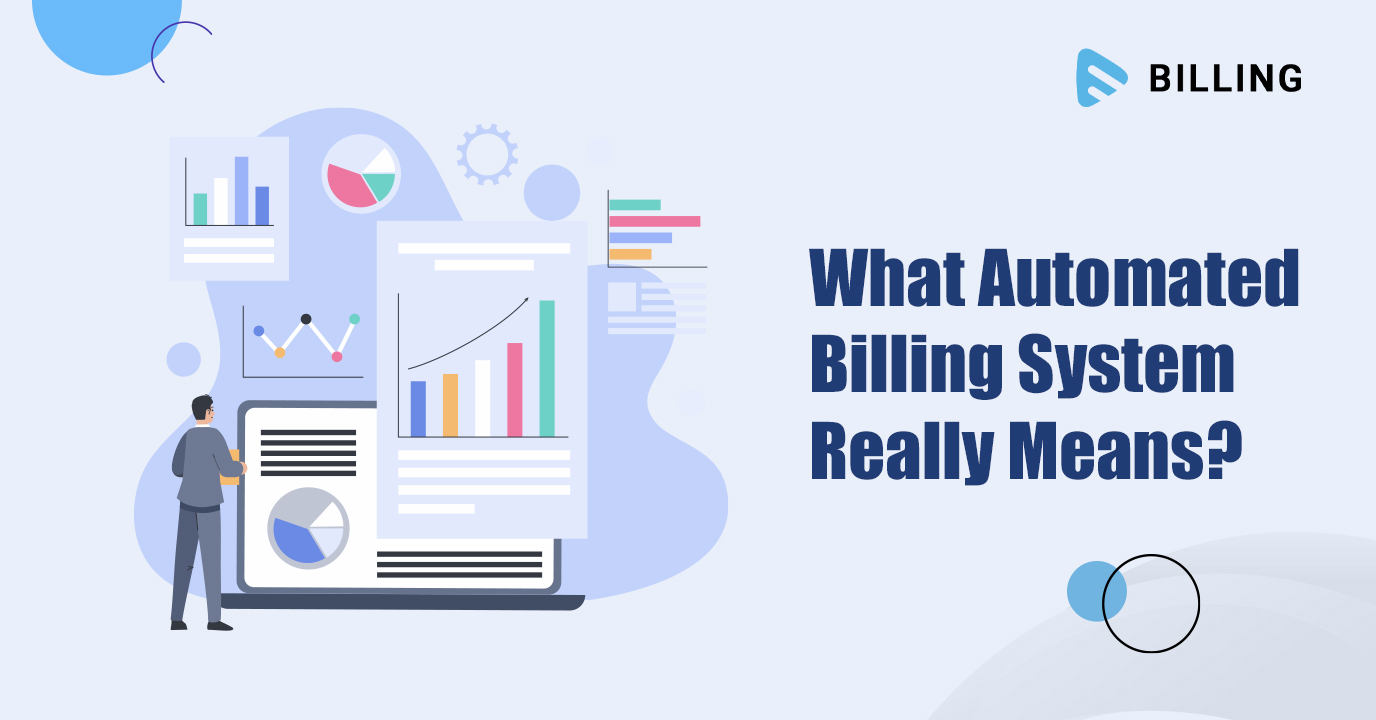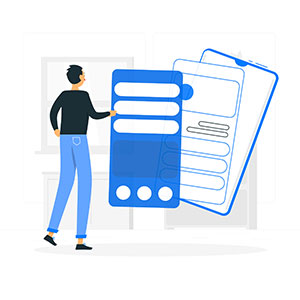An automated billing system is software that handles billing processes automatically. It reduces human errors and saves time.
This system transforms how businesses manage invoices and payments. Traditional billing methods can be tedious and prone to mistakes. An automated billing system streamlines these tasks, ensuring accuracy and efficiency. It tracks customer accounts, generates invoices, and processes payments with minimal human intervention.
Businesses of all sizes can benefit from this technology. It helps manage growing customer bases and complex billing needs. By automating these processes, companies can focus more on their core activities. This system also provides valuable data insights. These insights help in making informed business decisions. Understanding automated billing systems can enhance your business operations. Let’s explore how this technology works and its benefits.
Table of Contents
ToggleIntroduction to Automated Billing Systems

Credit: www.bairesdev.com
Have you ever spent hours manually processing invoices? It’s tedious, isn’t it? An automated billing system can change all that. It streamlines the entire billing process, making it quicker and more efficient.
Imagine never having to worry about missed payments or human errors again. Automated billing systems handle everything, ensuring accuracy and saving you precious time.
Purpose and Benefits
The primary purpose of an automated billing system is to simplify your billing tasks. It automates invoicing, payment processing, and tracking. This means you can focus on growing your business instead of being bogged down by paperwork.
One of the significant benefits is the reduction in errors. Manual entries can often result in mistakes. Automated systems, however, ensure accuracy. Additionally, they can send reminders for overdue payments, improving your cash flow.
Another benefit is the time saved. With automation, you no longer need to spend hours on billing. This extra time can be better spent on strategic tasks that drive your business forward.
Key Features
Automated billing systems come packed with features designed to make your life easier. One key feature is recurring billing. This is perfect for subscription-based businesses. You set it up once, and the system handles the rest.
Another essential feature is integration. These systems can connect with your existing software, such as accounting tools and CRM systems. This ensures seamless data flow and reduces the need for manual data entry.
Security is also a crucial feature. Automated billing systems are equipped with robust security measures to protect sensitive customer information. This ensures compliance with regulations and builds trust with your clients.
Wouldn’t it be great to have more control over your billing process? Automated systems offer detailed reporting and analytics. This helps you track performance and make informed decisions.
Have you thought about how an automated billing system could transform your business? Maybe it’s time to consider making the switch and experience the benefits firsthand.
Components of an Automated Billing System
An automated billing system simplifies financial transactions for businesses. It ensures accurate billing and reduces human errors. Several components make this system work efficiently.
Software Infrastructure
The software infrastructure is the backbone. It manages data and processes transactions. This software must be reliable and secure. It should handle large volumes of data smoothly.
User-friendly interfaces are crucial. They help staff navigate the system with ease. Customization options allow businesses to tailor the software to their needs. Regular updates keep the software running efficiently.
Integration Tools
Integration tools connect the billing system with other business applications. These tools ensure seamless data flow. They link the billing system to accounting software and customer databases.
APIs are common integration tools. They enable systems to communicate effectively. Well-integrated systems improve operational efficiency. This reduces manual data entry and errors.
How Automated Billing Works
Automated billing systems simplify payment processes by automatically generating invoices and managing transactions. Businesses save time and reduce errors with these systems. Users enjoy convenient payment experiences without manual intervention.
Have you ever wondered how businesses manage to keep track of their billing so efficiently? Automated billing systems are the answer. These systems streamline the billing process, making it faster and more accurate. But how exactly do they work? Let’s break it down.
Data Collection and Processing
The first step in an automated billing system is data collection. The system gathers transaction details from various sources like sales systems, customer databases, and payment gateways. This is similar to gathering ingredients before cooking a meal. Once collected, the data is processed. This involves verifying the information to ensure accuracy. Imagine checking the ingredients to make sure you have everything you need for a recipe.
Invoice Generation and Delivery
After processing, the system moves on to invoice generation. It creates detailed invoices based on the processed data. This is akin to following a recipe to create a dish. The system ensures each invoice is accurate and reflects the correct charges. Once generated, invoices are delivered to customers. Automated systems send these invoices via email or online portals. Think of it as serving the meal to your guests. It’s efficient and ensures that you never miss a payment. Are you still using manual billing methods? Switching to automated billing can save you time and reduce errors. Why not give it a try and see the difference it makes in your business operations?
Benefits of Implementing Automated Billing

Credit: www.muvi.com
Automating your billing system is like switching from walking to using a car. It speeds things up and removes a lot of manual errors. Let’s dive into the key benefits you can expect from implementing an automated billing system.
Efficiency and Accuracy
Imagine no longer having to manually enter data or cross-check invoices. Automated billing systems handle this for you. This means fewer errors and more time for other tasks.
With automation, invoices are processed faster. Your clients get billed promptly, and your cash flow improves. You also avoid the hassle of tracking down unpaid invoices.
Cost Reduction
Think about how much time and money you spend on manual billing. Automated systems cut these costs significantly. You save on labor and reduce the risk of costly mistakes.
An automated system also minimizes paper usage. You won’t need to print invoices or receipts, which is not only cheaper but also environmentally friendly.
Have you ever considered how automation could impact your business? How much time and money could you save with fewer errors and faster billing?
Switching to automated billing is a game-changer. It brings efficiency, accuracy, and cost savings. Why not give it a try and see the difference it makes for your business?
Challenges in Automated Billing Systems
Automated billing systems streamline financial processes for businesses. They reduce manual effort and errors. But, they come with their own set of challenges. Understanding these challenges helps in mitigating them effectively. Businesses must address these issues for smooth operation.
Technical Issues
Technical issues often arise in automated billing systems. System updates can cause unexpected disruptions. Compatibility with existing software might be a problem. These systems may also experience downtime. This can delay transactions and affect customer satisfaction. Regular maintenance and updates are essential to minimize issues.
Security Concerns
Security remains a major concern in automated billing systems. Cyber threats can target sensitive financial data. Unauthorized access can lead to data breaches. Businesses must ensure strong encryption protocols. Regular security audits help in identifying vulnerabilities. Educating staff about security practices is crucial. This safeguards against potential threats.
Choosing the Right Automated Billing Solution
Choosing the right automated billing solution can be a game-changer for your business. It’s not just about automating invoices; it’s about finding a system that seamlessly fits into your operations and enhances efficiency. But how do you make the right choice? Let’s dive into the key features you should look for and how to evaluate vendors effectively.
Features to Consider
When exploring automated billing systems, focus on features that align with your business needs. Integration capabilities are crucial. Does the system connect smoothly with your existing software, like accounting or CRM tools? A solution that requires extensive modification might not be ideal.
User-friendliness should be high on your list. You don’t want to spend hours training your team. Look for intuitive interfaces that make navigation a breeze. A straightforward system can save you time and reduce errors.
Consider the scalability of the solution. Your business will grow, and your billing system should grow with it. Does it support multiple currencies or offer tiered pricing options? These features can be invaluable as you expand your market.
Vendor Evaluation
Once you’ve identified key features, turn your attention to evaluating vendors. Start by checking their reputation. Online reviews and testimonials can provide insights into customer satisfaction and service reliability.
Support is another vital aspect. A vendor that offers robust customer support can be a lifesaver when issues arise. Do they provide 24/7 assistance, or are you limited to standard business hours? Your peace of mind depends on this.
Finally, examine their pricing structure. Are there hidden fees? Is there a trial period to test the system before committing? Transparency in pricing can prevent future headaches and ensure you’re getting value for your investment.
Reflect on these aspects before making your decision. The right automated billing solution can streamline processes, enhance accuracy, and save valuable time. How will you use these insights to choose the best fit for your business?
Industry Applications of Automated Billing
Automated billing systems are changing industries worldwide. They streamline payment processes, reduce errors, and improve efficiency. Businesses in various sectors now depend on these systems for smooth operations. Let’s explore how different industries benefit from automated billing.
Healthcare Sector
The healthcare sector deals with vast amounts of data. Automated billing systems help manage this efficiently. Hospitals and clinics use them to process patient billing accurately. They ensure that insurance claims are filed without delays. This reduces administrative burdens on staff. Patients benefit from clear and accurate billing statements. It also minimizes disputes over charges.
Retail And E-commerce
Retail and e-commerce sectors require quick and accurate transactions. Automated billing systems meet this need effectively. They handle multiple transactions simultaneously. This ensures customers experience a seamless checkout process. Such systems also help manage inventory levels. They update stock information in real-time after sales. Businesses can track sales trends easily. This helps in making informed decisions quickly.

Credit: www.highradius.com
Future Trends in Automated Billing
Automated billing systems are shaping the future of how businesses handle transactions. With technology advancing at lightning speed, it’s crucial to stay updated on the emerging trends. These developments not only streamline operations but also enhance customer experience. So, what’s on the horizon for automated billing?
Ai And Machine Learning Integration
AI and machine learning are transforming billing systems by making them smarter and more efficient. Imagine a system that can predict billing errors before they happen. That’s the power of AI. It can analyze customer data to provide personalized billing options, ensuring that each client gets the best possible service.
Machine learning can automatically detect patterns and anomalies in billing data. This helps in reducing fraud and ensuring accuracy. It’s like having an extra set of eyes that never sleep, constantly checking and optimizing your billing processes.
AI-driven chatbots can also enhance customer service by answering billing queries instantly. This ensures your clients receive timely support, improving their overall experience. Have you ever felt the frustration of waiting on hold for customer service? AI chatbots could be the solution to that problem.
Blockchain Technology
Blockchain technology is making waves in automated billing by offering unmatched security. With blockchain, every transaction is recorded in a secure, immutable ledger. This transparency reduces the risk of fraudulent activities and builds trust with your customers.
Blockchain also offers decentralized billing, which means no single point of failure. Your data is stored across a network of computers, making it virtually impossible for hackers to compromise. This enhances the reliability of your billing system.
Smart contracts, a feature of blockchain, can automate payment processes. Once conditions are met, payments are executed automatically, reducing manual intervention. This can lead to faster transactions and fewer human errors, saving you time and money.
Are you ready to embrace these future trends in automated billing? Staying ahead of the curve can give your business a competitive edge and transform how you handle transactions. The future is bright, and the possibilities are endless. What’s your next step in this evolving landscape?
Frequently Asked Questions
What Are Automated Billing Systems?
Automated billing systems streamline invoicing by automatically generating bills and processing payments. They reduce manual errors and save time. These systems integrate with accounting software for seamless financial management. Businesses can improve cash flow and enhance customer satisfaction with timely, accurate billing.
Automated billing also supports various payment methods.
What Is Automated System Example?
An example of an automated system is a self-driving car. It uses sensors and software to navigate roads.
How Does Automatic Billing Work?
Automatic billing charges your payment method on a set schedule. It ensures timely payments without manual intervention. You receive notifications before and after each transaction. It simplifies managing recurring expenses and helps avoid late fees. Ensure you have sufficient funds to prevent issues.
What Is Automated Payment System?
An automated payment system processes transactions electronically, eliminating the need for manual intervention. It ensures timely payments, enhances efficiency, and reduces errors. Businesses and individuals benefit from its convenience and reliability. This system supports various payment methods, including credit cards, bank transfers, and digital wallets.
Conclusion
An automated billing system simplifies payment processes. It saves time and reduces errors. Businesses can focus on growth instead of managing invoices. This system ensures timely payments and better cash flow. It also enhances customer satisfaction with prompt, accurate billing.
Overall, adopting an automated billing system is a smart move for efficiency. It streamlines operations and supports business success.




